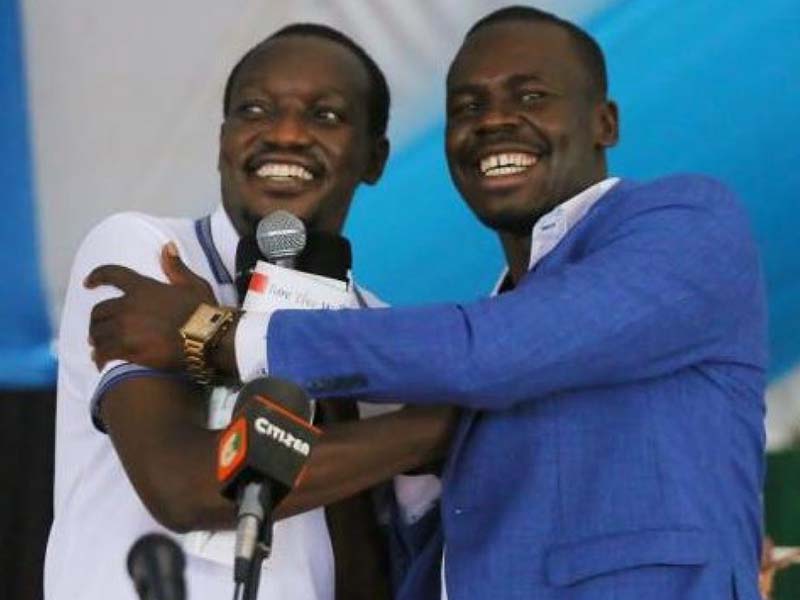Understanding the spectrum of sexual orientations and how they play out in relationships

Thursday, 3 October, 2024
McCreadie Andias
Sexuality, or sexual orientation, refers to who we are physically or emotionally attracted to.
Sometimes that attraction means we want to have an emotional or physical relationship with someone (or with multiple people) depending on our needs and desires.
It’s common for our sexual identity to change and grow over time as we meet new people and learn more about ourselves.
Many of our lessons about sexuality are taught based on a really narrow idea of gender identity and sexual orientation, also known as the cishet (cisgender heterosexual) lens. This is called heteronormative bias.
Heteronormative bias and the cishet lens assume a few things:
- People are cisgender (they identify with the gender they were assigned at birth).
- There are only two genders (male or female).
- People are straight (attracted to someone of the “opposite” gender).
- People follow stereotypical gender roles.
All these assumptions are wrong. Many people often carry these assumptions, however, and when we aren’t the identity people assume we are, we may feel the need to come out. This process is different for everyone, which makes sense because we’re all wonderfully unique.
We must understand that Sexuality exists on a spectrum. That means there are many ways to define who we are attracted to and a variety of ways to feel attraction.
Not all feelings of attraction come with feelings of sexual desire—which is absolutely valid—and sometimes we don’t want to have relationships with the people we are attracted to.
Gender identity often comes into play when trying to define your sexuality. Sexuality and gender are different things, but they can be connected. For some people, getting to know your gender identity can help you better understand how you define your sexuality.
That’s because labels for sexuality are often based on your gender and the genders of people you may be attracted to. But don’t get caught up if it’s not all coming together right away. It’s not necessary to have everything figured out.
The terms we commonly use to describe sexual orientations include, but are not limited to:
Allosexual
A word and category describing those who experience sexual attraction. Use of this term helps normalize the experience of people on the asexual spectrum and provides a more specific label to describe those who aren’t part of the asexual community.
Androsexual
A term used to communicate sexual or romantic attraction to men, males, or masculinity. This term intentionally includes attraction to those who identify as men, male, or masculine, regardless of biology, anatomy, or sex assigned at birth.
Asexual
Someone who identifies as a member of the asexual community experiences little or no sexual attraction to others of any gender. Asexuality is a broad spectrum. People who identify as asexual may also identify with one or more other terms that can more specifically capture their relationship to sexual attraction.
Also referred to as “aces,” some people who are asexual do experience romantic attraction to people of one or multiple genders. Some asexual people may also engage in sexual activity.
Aromantic
A romantic orientation that describes people who experience little or no romantic attraction, regardless of sex or gender.
Autosexual
A person who’s sexually attracted to themselves. Someone’s desire to engage in sexual behavior such as masturbation doesn’t determine whether they’re autosexual.
Autoromatic
A romantic orientation that describes a person who’s romantically attracted to themselves. People who identify as autoromatic often report experiencing the relationship they have with themselves as romantic.
Bicurious
This refers to people who are questioning or exploring bisexuality, often due to a curiosity about one’s romantic or sexual attraction to people of the same or different genders.
Bisexual
A sexual orientation that describes people who experience sexual, romantic, or emotional attractions to people of more than one gender.
Also referred to as “bi,” bisexual typically includes individuals who are attracted to a variety of people, with genders that are similar to and different than their own.
Biromantic
People who experience romantic attraction, but not sexual attraction, to people of more than one gender.
Closeted
Closeted, or the state of being “in the closet,” describes people in the LGBTQIA+ community who don’t publicly or openly share their sexual identity, sexual attraction, sexual behavior, gender expression, or gender identity.
Closeted is often understood as the opposite of “out” and refers to the metaphorical hidden or private place an LBGTQIA+ person comes from in the process of making decisions about disclosing gender and sexuality.
Some people may be out in certain communities but closeted in others due to fear of discrimination, mistreatment, rejection, or violence.
Cupiosexual
Cupiosexual describes asexual people who don’t experience sexual attraction but still have the desire to engage in sexual behavior or a sexual relationship.
Demisexual
On the asexual spectrum, this sexual orientation describes people who experience sexual attraction only under specific circumstances, such as after building a romantic or emotional relationship with a person.
Demiromantic
This romantic orientation describes people who experience romantic attraction only under specific circumstances, such as after building an emotional relationship with a person.
Gay
A term that describes people who experience sexual, romantic, or emotional attraction to people of the same or a similar gender.
Some gay-identified women prefer the term “lesbian,” while others prefer “queer” or “gay.” It’s also best to ask which word or term someone uses to describe themselves.
Graysexual
Graysexual is used to acknowledge the gray area on the sexuality spectrum for people who don’t explicitly and exclusively identify as asexual or aromantic.
Many people who identify as graysexual do experience some sexual attraction or desire, but perhaps not at the same level or frequency as those who identify their sexuality as being completely outside of the asexual spectrum.
Grayromantic
A romantic orientation that describes individuals whose romantic attraction exists in the gray area between romantic and aromantic.
Many people who identify as grayromantic do experience some romantic attraction, but perhaps not at the same level or frequency as those who identify their sexuality or romantic orientation as something other than asexual.
Gynesexual
A term used to communicate sexual or romantic attraction to women, females, or femininity.
This term intentionally includes attraction to those who identify as women, female, or feminine regardless of biology, anatomy, or the sex assigned at birth.
Heterosexual
A term that describes people who experience sexual, romantic, or emotional attraction to people of the “opposite” gender (e.g., male vs. female, man vs. woman) or a different gender.
Both cisgender and transgender-identified people can be heterosexual. This sexual orientation category is commonly described as straight.
Lesbian
A woman or female-identified person who experiences sexual, romantic, or emotional attraction to people of the same or a similar gender. However, it’s important to note that not all lesbians are female-identified; some define their identity as more nonmale or femme than female or feminine.
Some people who are lesbians may also refer to themselves as gay or queer, while others prefer the term lesbian.
LGBTQIA+
The acronym that often describes people who don’t identify as exclusively heterosexual or exclusively cisgender.
The letters in the LGBTQIA+ acronym stand for lesbian, gay, bisexual, transgender, queer or questioning, intersex, and asexual.
The + symbol in LGBTQIA+ refers to the fact that there are many sexual orientations and gender identities that are part of the broader LGBTQIA community but aren’t included as part of the acronym.
Libidoist asexual
A term used to describe an asexual person who experiences sexual feelings that are satisfied through self-stimulation or masturbation.
This term acknowledges that, for some people, acting on libido or sexual feelings doesn’t necessarily involve sexual behavior with others.
Monosexual
A broad sexual orientation category that includes people who experience romantic or sexual attraction to people of one sex or gender. Monosexuality typically includes those who are exclusively heterosexual, gay, or lesbian.
Non-libidoist asexual
Referring to an identity on the asexuality spectrum, a non-libidoist asexual is someone who doesn’t experience any sexual feelings or has an active sex drive.
Omnisexual
Omnisexual is similar to pansexual and can be used to describe people whose sexuality isn’t limited to those of a particular gender, sex, or sexual orientation.
Pansexual
A term that describes people who can experience sexual, romantic, or emotional attraction to any person, regardless of that person’s gender, sex, or sexuality.
Panromantic
A term that describes people who can experience romantic, or emotional (but not sexual) attraction to any person, regardless of that person’s gender, sex, or sexuality.
Polysexual
A term that describes people with a sexual orientation that involves sexual or romantic attraction to people with varying genders. Polysexual orientations include bisexuality, pansexuality, omnisexuality, and queer, among many others.
Queer
An umbrella term that describes people who aren’t exclusively heterosexual. The term “queer” (the Q in LBGTQIA+) acknowledges that sexuality is a spectrum as opposed to a collection of independent and mutually exclusive categories.
Use of the word opens up options beyond lesbian, gay, and bisexual to people who don’t fit neatly into these categories or prefer a category that isn’t dependent on sex and gender.
While this term once had negative and derogatory connotations, queer has resurfaced as a common and socially acceptable way for LGBTQIA+ people to refer to themselves and their community.
Despite its growing use, some people still have negative associations with the word and don’t want to be referred to in this way. Queer, like all terms describing sexuality, should be used sensitively and respectfully.
Sapiosexual
A word used to describe those who experience attraction based on intelligence, rather than sex or gender.
Skoliosexual
A sexual orientation that describes people who are sexually attracted to those with non-cisgender gender identities, such as people who are nonbinary, genderqueer, or trans.
Spectrasexual
A term that describes people who are sexually or romantically attracted to multiple or varied sexes, genders, and gender identities, but not necessarily all or any.
Straight
Also known as heterosexual, straight describes people who experience sexual, romantic, or emotional attraction to people of the “opposite” gender (e.g., male vs. female, man vs. woman) or a different gender.People who identify as cisgender and transgender can be straight.
Sexual orientation plays a significant role in shaping the dynamics of a relationship, as it influences attraction, identity, and communication between partners.
Different sexual orientations, including heterosexuality, homosexuality, bisexuality, pansexuality, and asexuality, contribute to diverse relationship dynamics based on the individuals' understanding of their own and their partner's orientations.
Here's an exploration of how various sexual orientations can affect relationship dynamics:
1. Heterosexual Relationships
Heterosexual couples typically involve a man and a woman attracted to the opposite sex. Traditional societal norms often frame these relationships, which can influence expectations around gender roles, marriage, and family.
Despite being widely accepted, heterosexual relationships can still experience conflicts over gender roles, societal pressures, and differing personal needs or desires.
2. Homosexual Relationships
Homosexual relationships involve individuals attracted to the same gender, whether male or female. These relationships often challenge traditional norms and may experience societal stigma or discrimination, depending on cultural context.
Since both partners share the same gender, there may be a greater understanding of each other’s experiences and challenges related to their sexual identity. However, external pressures and lack of legal rights in some areas can impact the relationship.
Mutual support is often crucial, especially in environments that may not fully accept homosexuality. The shared experience of societal struggles can strengthen the emotional bond.
3. Bisexual Relationships
Bisexual individuals experience attraction to more than one gender. In a relationship, this can create unique dynamics, as the bisexual partner may navigate attraction toward different genders simultaneously.
There can be challenges in trust and insecurity within relationships involving a bisexual person. Their partner may misunderstand bisexuality and fear infidelity, assuming that attraction to multiple genders increases the likelihood of unfaithfulness, although this is a misconception.
Bisexual individuals may face both external and internalized biphobia, even from within the LGBTQ+ community, which can strain the relationship.
4. Pansexual Relationships
Pansexuality involves attraction regardless of gender identity. A pansexual person may be attracted to people of any gender, including those who are non-binary or genderqueer.
This fluidity can foster a relationship dynamic that transcends traditional gender expectations.
In pansexual relationships, partners may explore or embrace non-conforming identities, leading to open-mindedness and a fluid approach to gender and sexuality. This can enrich the relationship but may also cause confusion or misunderstanding if either partner struggles with defining boundaries around gender and attraction.
5. Asexual Relationships
Asexual individuals do not experience sexual attraction, though they may experience romantic attraction. In relationships, this can lead to a focus on emotional intimacy and companionship rather than physical intimacy.
For relationships involving an asexual person, open communication about boundaries and needs is essential. If one partner has sexual desires and the other does not, it can create tension unless both partners find a comfortable way to balance these differences.
Asexual people may have romantic relationships that prioritize emotional closeness over physical intimacy, which can still be deeply fulfilling and intimate.
6. Polyamorous or Non-Monogamous Relationships
People of any sexual orientation may identify as polyamorous, meaning they are open to having multiple romantic or sexual partners. In polyamorous relationships, communication and honesty are key, as navigating relationships with multiple people requires setting clear boundaries and managing emotions.
Jealousy, time management, and balancing the needs of multiple partners can create challenges, but successful polyamorous relationships often rely on transparency, mutual consent, and respect for each partner's needs.
7. Queer Relationships
As highlighted before, Queer is an umbrella term that can refer to individuals who don't conform to traditional categories of sexual orientation or gender identity. In queer relationships, there may be an emphasis on fluidity and rejecting conventional labels, which can lead to greater exploration of non-traditional relationship structures.
Queer individuals may face challenges in societal acceptance, which can impact the relationship's dynamics, particularly if they face discrimination or marginalization based on their identity.
Common phrases in sexuality and identity
Passing
Passing refers to society’s perceptions and assumptions of someone’s sexuality or gender.
Specifically, this term is most commonly used to discuss the frequency and extent to which an LGBTQIA+ person is perceived as or assumed to be straight or cisgender.
It’s important to note that some LGBTQIA+ people have the desire to pass while others do not. In fact, the act of being perceived as straight or cisgender can be a source of discomfort and discrimination for some people in the LGBTQIA+ community.
Coming out
A phrase that refers to the process of being open about one’s sexuality and gender. For many LGBTQIA+ people, “coming out” isn’t a one-time event but a process and series of moments and conversations.
Also described as “coming out of the closet,” this process can include:
- sharing about a same-gender or similar-gender sexual or romantic attraction or experience
- identifying as LGBTQIA+
- disclosing one’s specific gender identity, gender expression, or sexual or romantic orientation
Some LGBTQIA+ people decide to keep their sexuality, gender, or intersex status private, while others decide to share these things with loved ones, acquaintances, or the public.
The process of coming out or the state of being out is a source of self-acceptance and pride for many (but not all) LGBTQIA+ people.
However, it’s important to remember that each person’s coming out experience is different, and the act of coming out can be hard and emotional.
The decision to come out is deeply personal. Each person should make decisions about disclosing sexuality and gender in their own time and manner.
Fluid
This term refers to the fact that sexuality, sexual attraction, and sexual behavior can change over time and vary based on circumstances.
It’s used to describe people who experience shifts in their sexuality, sexual attraction, or sexual behavior in different situations or throughout the course of their lifetime. You may hear someone describe their sexuality as fluid.
Allosexism
This refers to norms, stereotypes, and practices in society that operate under the assumption that all human beings experience, or should experience, sexual attraction.
Allosexism grants privilege to those who experience attraction and leads to prejudice against and erasure of asexual people.
Sexual attraction
Sexual attraction refers to experiencing sexual desire or arousal in relation to another person or group of people.
Sex-averse
Sex-averse describes those who are on the asexual spectrum and are averse to or extremely disinterested in sex or sexual behavior.
Sex-favorable
On the spectrum of asexuality, sex-favorable is viewed as the “opposite” of sex-repulsed and describes those who are asexual, and in certain situations can have favorable or positive feelings toward sex.
Sex-indifferent
Sex-indifferent describes those who are on the asexual spectrum and feel indifferent or neutral about sex or sexual behavior.
Sex-repulsed
Similar to sex-averse, sex-repulsed is on the spectrum of asexuality and describes those who are asexual and are repulsed by or extremely disinterested in sex or sexual behavior.
BOTTOM LINE
It’s OK to feel unsure or overwhelmed by all of the terms we now have to describe sexual and romantic orientation, attraction, and behavior.
Expanding the language you use to describe your sexuality can provide important guidance, validation, and access to community while on your journey of sexual self-discovery and satisfaction.
If and when you choose to come out, sexuality labels can help you understand yourself and help you find a community with others who understand some of the thoughts and feelings you are having.
Using labels can help:
- Communicate to others within and outside the LGBTQIA+ community how you identify.
- Acknowledge the diverse and unique experiences outside cishet experiences.
- Add another layer to your experiences, along with other characteristics such as race, ability, and gender.
- Create a sense of belonging within a community during what can be a difficult process of questioning and exploring identity.
-Give allies of the LGBTQIA+ community a better understanding of what unique experiences of discrimination and bias you may be dealing with due to your sexuality, and how to better support you.
Realizing you may have a sexual orientation that is not straight can feel overwhelming. It can be especially hard if you don’t have supportive people around you.
It’s important to remember that sexuality is fluid, and labels can be too. That means both your sexuality and the labels you use to describe yourself can change and shift.
If you choose a label that feels right but you later feel it no longer fits your experience, it’s OK to explore other labels. Some people even choose not to label their sexuality at all. All of these choices are valid and unique to each person.
It’s also important to know you don’t need to prove your sexuality to anyone, nor do you need to experience sex with someone to prove your identity to yourself or others.
Whether you’re questioning your sexuality or considering coming out about it, understanding the layers of sexuality is an important part of getting to know yourself and forming healthy relationships with yourself and others.
Familiarizing yourself with language that describes different sexual and romantic feelings and orientations will help you, your partners, and your friends understand the many ways people experience and identify their sexuality.
Sexuality has to do with how you identify, how (and if) you experience sexual and romantic attraction, and your interest in and preferences around sexual and romantic relationships and behavior.
Who your sexual or romantic partner is at a given moment doesn’t define this part of who you are. Sexuality can be fluid. It can change in different circumstances or over time.
Observing patterns in sexual and romantic attraction, behavior, and preferences over time is one way to better understand your sexual identity or romantic orientation.
Different orientations come with their unique challenges, but they also offer opportunities for deeper understanding and connection.
Successful relationships, regardless of orientation, are often built on mutual respect, open communication, and emotional intimacy, allowing both partners to navigate their unique circumstances effectively.
What's Your Reaction?



































































































































































































































































































